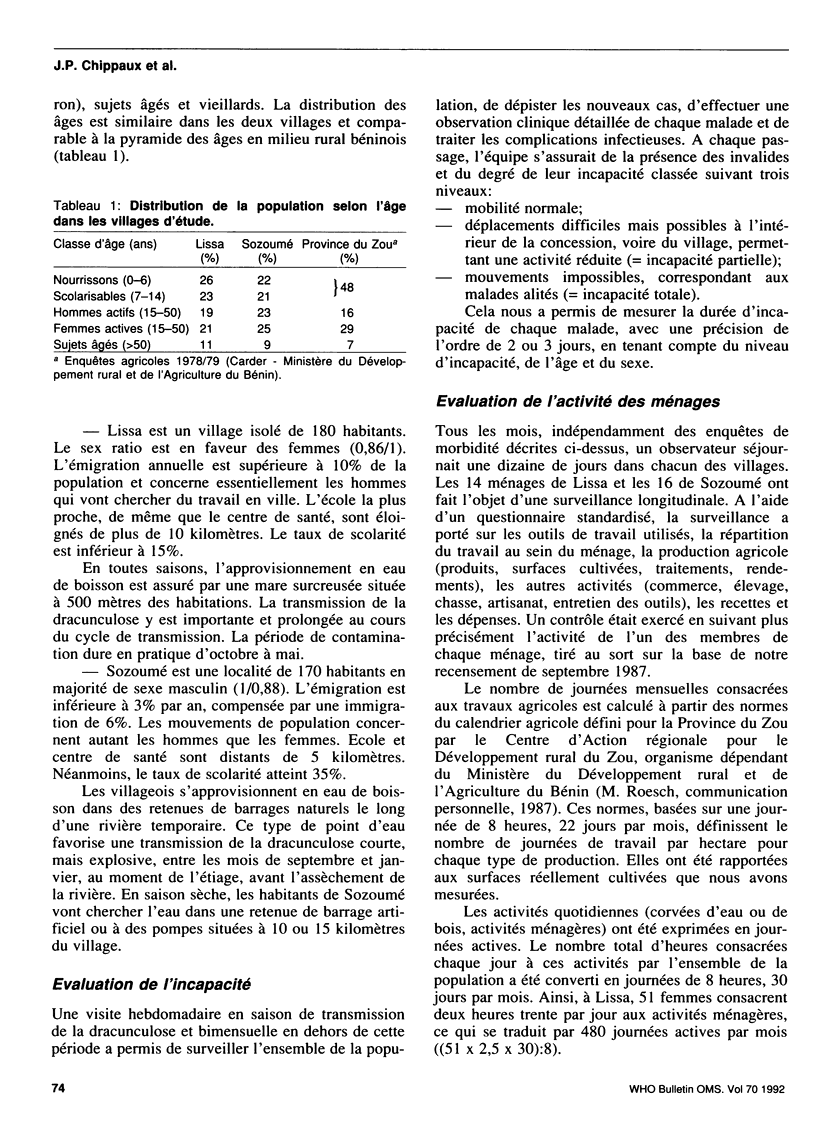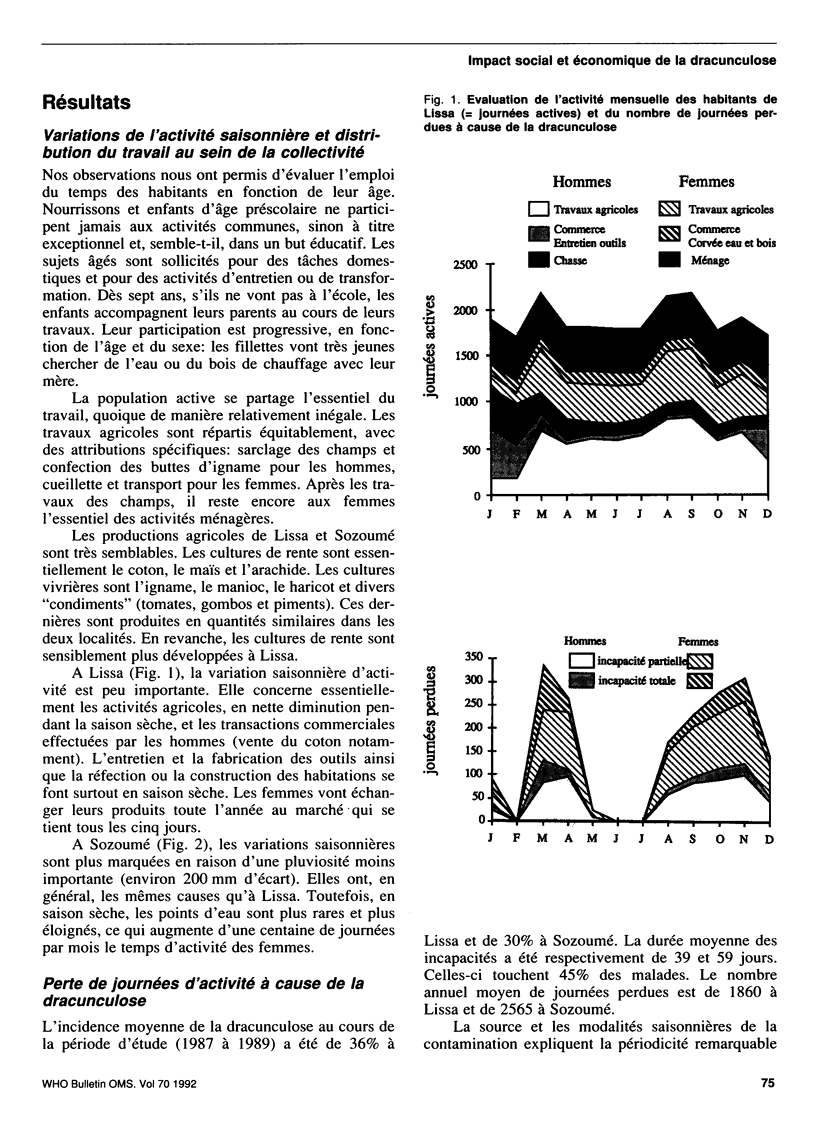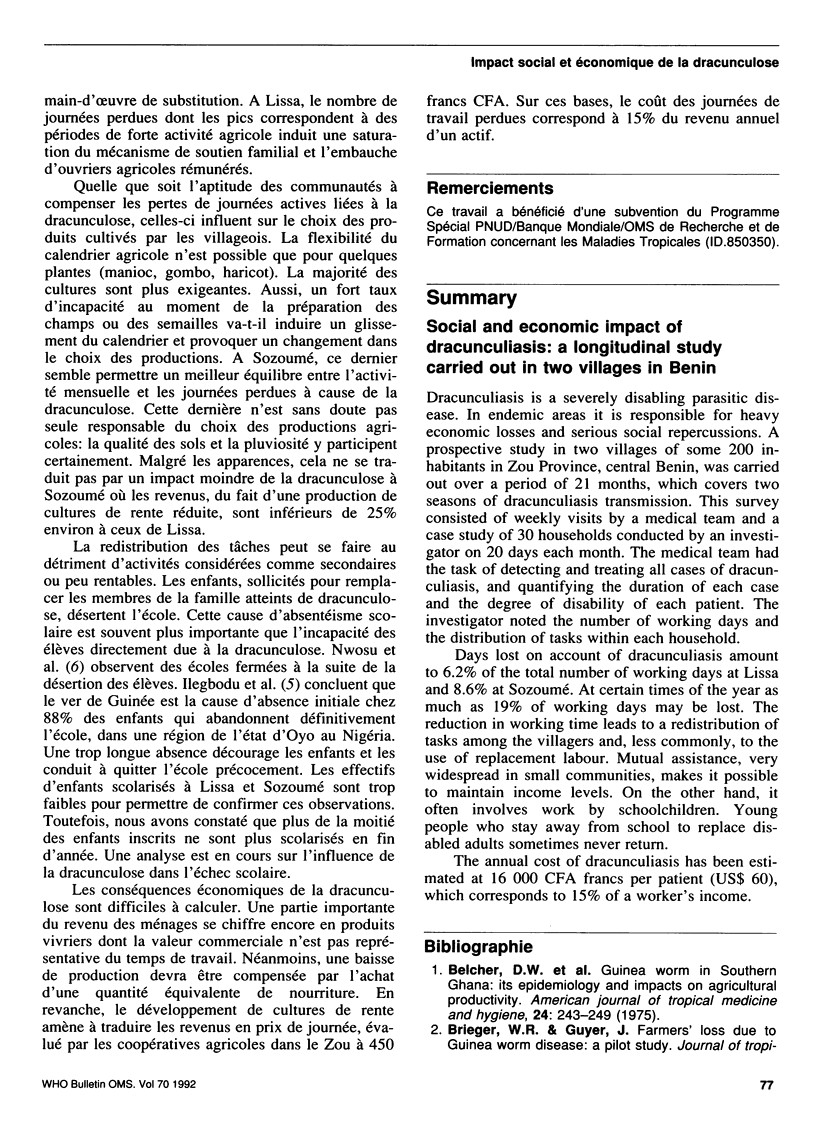Abstract
Dracunculiasis is a severely disabling parasitic disease. In endemic areas it is responsible for heavy economic losses and serious social repercussions. A prospective study in two villages of some 200 inhabitants in Zou Province, central Benin, was carried out over a period of 21 months, which covers two seasons of dracunculiasis transmission. This survey consisted of weekly visits by a medical team and a case study of 30 households conducted by an investigator on 20 days each month. The medical team had the task of detecting and treating all cases of dracunculiasis, and quantifying the duration of each case and the degree of disability of each patient. The investigator noted the number of working days and the distribution of tasks within each household. Days lost on account of dracunculiasis amount to 6.2% of the total number of working days at Lissa and 8.6% at Sozoumé. At certain times of the year as much as 19% of working days may be lost. The reduction in working time leads to a redistribution of tasks among the villagers and, less commonly, to the use of replacement labour. Mutual assistance, very widespread in small communities, makes it possible to maintain income levels. On the other hand, it often involves work by schoolchildren. Young people who stay away from school to replace disabled adults sometimes never return. The annual cost of dracunculiasis has been estimated at 16,000 CFA francs per patient (US$ 60), which corresponds to 15% of a worker's income.
Full text
PDF





Selected References
These references are in PubMed. This may not be the complete list of references from this article.
- Belcher D. W., Wurapa F. K., Ward W. B., Lourie I. M. Guinea worm in southern Ghana: its epidemiology and impact on agricultural productivity. Am J Trop Med Hyg. 1975 Mar;24(2):243–249. doi: 10.4269/ajtmh.1975.24.243. [DOI] [PubMed] [Google Scholar]
- Hopkins D. R., Ruiz-Tiben E. Dracunculiasis eradication: target 1995. Am J Trop Med Hyg. 1990 Sep;43(3):296–300. doi: 10.4269/ajtmh.1990.43.296. [DOI] [PubMed] [Google Scholar]
- Ilegbodu V. A., Kale O. O., Wise R. A., Christensen B. L., Steele J. H., Jr, Chambers L. A. Impact of guinea worm disease on children in Nigeria. Am J Trop Med Hyg. 1986 Sep;35(5):962–964. doi: 10.4269/ajtmh.1986.35.962. [DOI] [PubMed] [Google Scholar]
- Nwosu A. B., Ifezulike E. O., Anya A. O. Endemic dracontiasis in Anambra State of Nigeria: geographical distribution, clinical features, epidemiology and socio-economic impact of the disease. Ann Trop Med Parasitol. 1982 Apr;76(2):187–200. doi: 10.1080/00034983.1982.11687526. [DOI] [PubMed] [Google Scholar]
- Smith G. S., Blum D., Huttly S. R., Okeke N., Kirkwood B. R., Feachem R. G. Disability from dracunculiasis: effect on mobility. Ann Trop Med Parasitol. 1989 Apr;83(2):151–158. doi: 10.1080/00034983.1989.11812323. [DOI] [PubMed] [Google Scholar]


